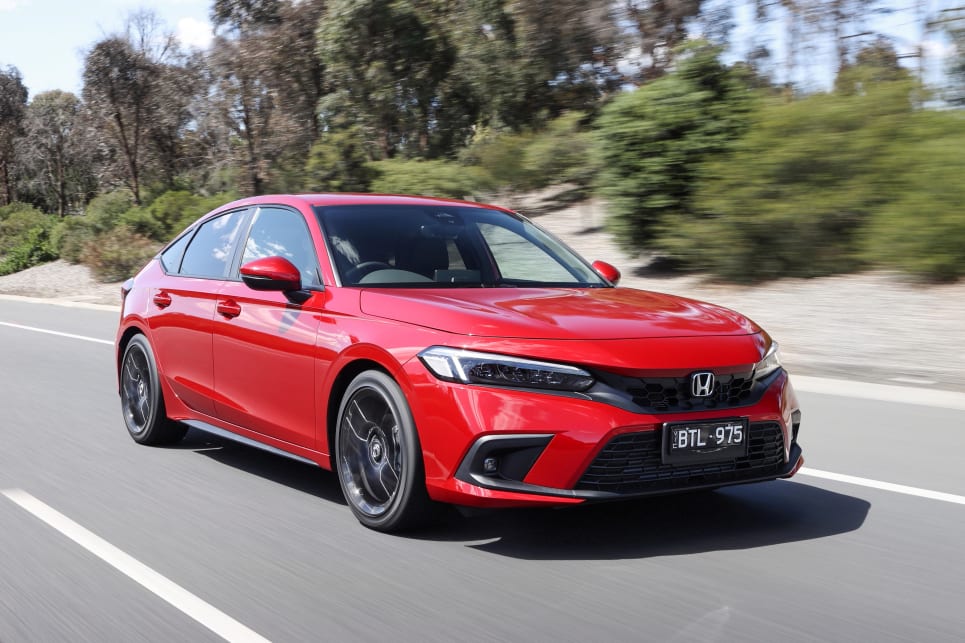
Can Kia topple Mazda in 2025? How the Kia Tasman ute, EV5 electric car and next-gen Mazda CX-5 could shape the sales charts in Australia this year
Kia set a sales record in Australia last year and the company’s boss...
Browse over 9,000 car reviews

Honda’s success or failure in the 2022 sales race will potentially have huge ramifications on the way you’ll buy new cars in the future.
As reported, the Japanese brand has radically altered the way it does business in Australia. It has ditched the traditional dealership structure and instead has adopted what’s called ‘The Agency Model’ for selling its cars.
In short, it means Honda Australia now controls all stock of cars and you, the customer, are buying directly from them, with the dealer now primarily for test drives, delivery and servicing.
Other brands will be watching with interest to see how both customers and dealers accept this new way of doing business. If it works, it will embolden more car companies to move to an agency model, but if it flops, it will give car dealers more power in future negotiation.
While car manufacturers have an alliance with dealers and put on a happy face in public, behind the scenes there is discontent that the car brand doesn’t have any direct control over the customer experience - that’s the dealer’s role.
While that’s not to malign car dealers or tar all with the same negative brush, the lack of control has seen more and more car brands look for ways to have more say in the car buying experience.
Mercedes-Benz Australia is another brand adopting the agency model, after experimenting with it with its electric EQ models initially, while Genesis Motors Australia controls its retail operations and Cupra Australia will do the same.
But Honda Australia is leading the way, having spent most of 2021 overhauling the way it does business in Australia, so it will be the first mainstream brand to see indicative results of what this new model means.
Early signs weren’t good, as the transition and other coronavirus-related delays saw the brand’s overall sales dive by nearly 40 per cent in 2021 (39.5% to be precise). That also wasn’t helped by its decision to drop the City and Jazz compact models as well as introducing a new single-model Civic ‘range’ late in the year.
In total, Honda Australia sold just 17,562 new vehicles in 2021, a big decline from just over 40,000 cars five years ago and putting it behind the likes of relative newcomer MG and luxury brand Mercedes-Benz. It also puts it under threat from brands like LDV, Suzuki and Skoda in the coming years as those brands continue to grow.
That’s not to say Honda is on a permanent decline. In fact, the switch to the new sales model is designed to ensure the brand remains more profitable even if it sells fewer cars.
Signs from the final months of 2021 were positive for the company, with Honda Australia director Stephen Collins happy with the trends he was seeing.
“November was actually the first full month of relatively normal trading conditions for our new national network of Honda Centres, especially in the key metropolitan areas of Melbourne and Sydney, which resulted in more sales contracts signed and more cars delivered to customers, as well as an increased level of customer enquiries,” he said in January.
“Through our new ‘live’ customer feedback system, we’ve seen 89 per cent of customers strongly agree that buying a new Honda was exceptionally easy, while 87 per cent gave the new sales experience a top rating of nine or 10 out of 10.”
The Japanese brand has some important new models arriving in 2022 that should help give it a boost, namely the new-generation HR-V compact SUV.

Already on sale in Europe, the new HR-V is available with a hybrid engine for the first time, badged as e:HEV.
Adding more electrified models would be an important step for Honda, which was an early proponent of hybrids but found only limited success. The market demand for hybrid models is now higher, particularly within SUVs, so offering the HR-V e:HEV would likely be a shrewd move.
Honda Australia also has plans to expand the Civic range in ‘22, with the all-new Civic Type R hot hatch arriving to inject some excitement into its image. The benchmark front-wheel-drive small car is due to hit local showrooms by the end of 2022, and the Civic range will also expand with the addition of the e:HEV, a ‘self-charging’ hybrid model due earlier.

Longer term, a new CR-V is due by 2023, which is arguably the brand’s most important model given it lines up against the likes of the popular Toyota RAV4, Hyundai Tucson and Mazda CX-5.
If Honda Australia can enjoy a strong year in 2022, it could have a far-reaching impact across the industry as more brands try to take advantage of its way of doing business.
Comments